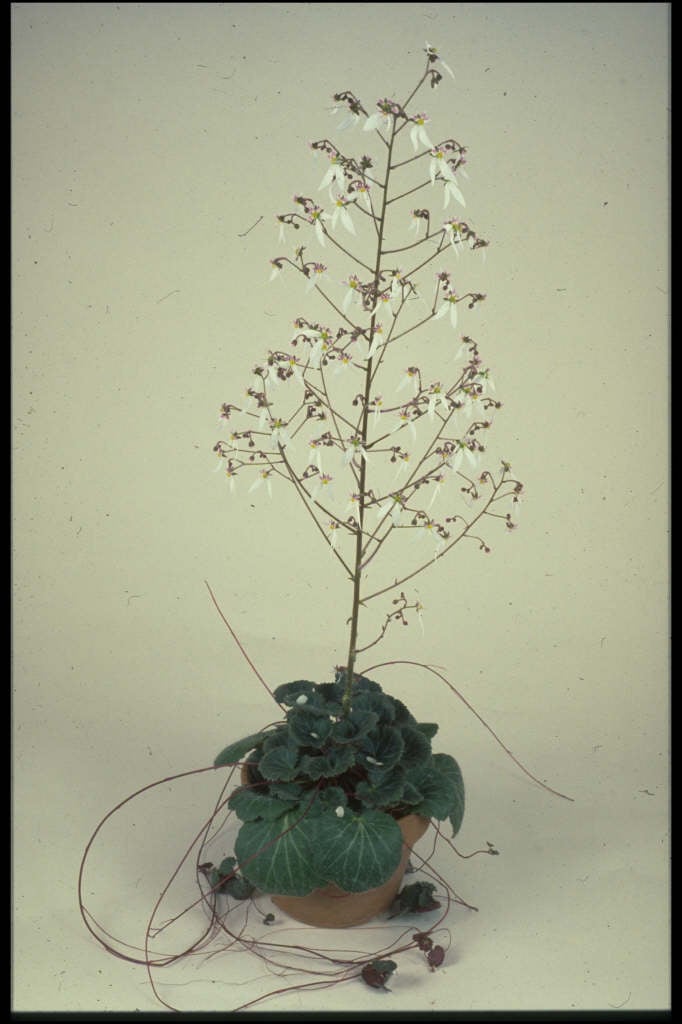Saxifraga stolonifera (5)
creeping saxifrage
An herbaceous perennial, semi-evergreen under glass, to 30cm, with long, slender red stolons bearing plantlets, rounded hairy dark green leaves to 10cm across, with silvery veins above, reddish beneath; small white flowers in panicles
Other common names
creeping sailorstrawberry begonia
see morestrawberry geranium
strawberry saxifrage
Aaron's beard
beefsteak plant
mother of thousands
old man's beard
Wandering Jew
Synonyms
Saxifraga sarmentosaSaxifraga ligulata

Buy this plant
Size
Ultimate height
0.1–0.5 metresTime to ultimate height
2–5 yearsUltimate spread
0.1–0.5 metresGrowing conditions
Moisture
Well–drainedpH
Acid, Alkaline, NeutralColour & scent
| Stem | Flower | Foliage | Fruit | |
| Spring | Green Grey Silver Red | |||
|---|---|---|---|---|
| Summer | White | Green Grey Silver Red | ||
| Autumn | Green Grey Silver Red | |||
| Winter | Green Grey Silver Red |
Position
- Full shade
- Partial shade
Aspect
South–facing or North–facing or East–facing or West–facing
Exposure
Sheltered Hardiness
H2Botanical details
- Family
- Saxifragaceae
- Native to GB / Ireland
- No
- Foliage
- Semi evergreen
- Habit
- Trailing
- Genus
Saxifraga can be annuals, biennials, evergreen or herbaceous perennials, mostly mat-forming in habit, with simple or palmately lobed leaves and starry or rounded flowers which may be solitary of in panicles or cymes
- Name status
Correct
- Horticultural Group
- Irregulares section saxifrages are shade-tolerant, usually herbaceous perennials forming rosettes broad, palmately lobed leaves, with leafless stems bearing lax panicles of small flowers with short upper, and longer lower petals, in summer or autumn
- Plant range
- Far East
How to grow
Cultivation
Grow indoors where it tolerates a wide range of conditions. Outdoors grow in well-drained humus-rich soil in full or partial shade
Propagation
Propagate by seed or detach individual rosettes
Suggested planting locations and garden types
- Patio and container plants
- Rock garden
- Flower borders and beds
Pruning
No pruning required
Pests
May be susceptible to aphids, slugs, vine weevil and glasshouse red spider mite
Diseases
Generally disease-free
Love gardening
Sign up to receive regular gardening tips, inspiration, offers and more
View our Privacy Policy
Get involved
The Royal Horticultural Society is the UK’s leading gardening charity. We aim to enrich everyone’s life through plants, and make the UK a greener and more beautiful place.